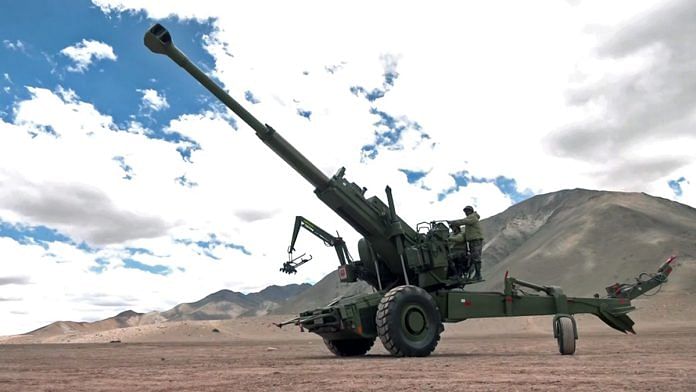New Delhi: The rare two-day India-China military talks held this Sunday and Monday failed to make any immediate headway on the critical issue of Chinese presence in Depsang Plains but both sides agreed to “resolve the remaining issues in an expeditious manner”.
A joint statement released by the Ministry of External Affairs (MEA) and the Chinese foreign ministry Tuesday said that the meeting was held on the Indian side of the Chushul-Moldo border meeting point on 13-14 August 2023.
This was the first time that both sides held talks that lasted for two days — a fact which was kept under wraps until the joint statement was issued. It added that the two sides had a positive, constructive and in-depth discussion on the resolution of the remaining issues along the Line of Actual Control (LAC) in the Western Sector.
In line with the guidance provided by the leadership, both sides exchanged views in an open and forward looking manner, it added. “They agreed to resolve the remaining issues in an expeditious manner and maintain the momentum of dialogue and negotiations through military and diplomatic channels. In the interim, the two sides agreed to maintain the peace and tranquility on the ground in the border areas,” said the joint statement.
Despite disengagement from the Galwan Valley, Pangong Tso, Gogra (PP-17A) and Hot Springs (PP-15), the Indian and Chinese armies continue to maintain thousands of troops and equipment along the LAC.
India has been seeking restoration of status quo as of April 2020 in areas which saw tensions beginning May 2020, besides resolution of earlier disagreements including those over Depsang Plains.
Sources in the defence and security establishment said that the talks focused on a large number of issues and that both sides have decided to convey possible confidence building measures for the consideration of policy-makers back in their respective capitals.
The meeting came ahead of Prime Minister Narendra Modi and Chinese President Xi Jinping’s scheduled visit to Johannesburg for the BRICS Summit (August 22-24), where the possibility of a bilateral meeting between the two has not been ruled out.
Xi will also be travelling to India next month for the G-20 Summit.
For the 19th-round of military talks, the Indian delegation was led by Lt Gen Rashim Bali, commander of the Leh-based 14 Corps, while the Chinese delegation was to be led by the commander of the South Xinjiang military district.
Asked if the Chinese have agreed to withdraw from the Depsang Plains or if they have allowed India to patrol its traditional Patrolling Points (PP) in Depsang Plains, sources said “it is a matter of ongoing discussion” — indicating that the latest round of talks yielded no firm results in this regard.
Asked what else transpired in the meeting, sources said that issues discussed date back to pre-April 2020 status quo such as CBMs like no patrolling in buffer zones created in disputed areas, sanctity of airspace and regular interaction between different levels of command at the tactical level. Both India and China are in agreement over these issues.
One more issue that was agreed upon was a freeze on the build-up of troops and equipment along the Line of Actual Control (LAC).
As reported by ThePrint earlier, the primary points of focus of the 19th round of talks was the Depsang Plains, which fall under India’s Sub Sector North (SSN). As elsewhere, the LAC here is disputed. The SSN is sandwiched between the Siachen Glacier on one side and Chinese-controlled Aksai Chin on the other, making it strategically important.
Earlier, Indian soldiers used to patrol PPs 10, 11, 11A, 12, and 13 but the Chinese have now blocked the Indian passage to these points. The Chinese have been blocking Indian patrols, which go on foot beyond the feature called the Bottleneck area or ‘Y’ Junction.
While the Indian Army can still push ahead with force to reach its traditional patrolling points if it wants, it has avoided doing so to not create any new front for conflict. Indian patrols can reach the Bottleneck by road, but further travel is only possible by foot through two routes. The feature called ‘Y’ Junction is the starting point of the two routes.
The north route, following the Raki Nala, goes towards PP10 and the southeast route goes towards PP13 along what is known as Jiwan Nala.
The Chinese claim line here is about 1.5 km from an Indian military camp in an area known as Burtse.
Indian forces have been blocking Chinese patrols from going beyond the bottleneck area. In 2015, the Chinese had intruded right until their claim line before eventually retreating.
(This is an updated version of the report)
(Edited by Amrtansh Arora)



